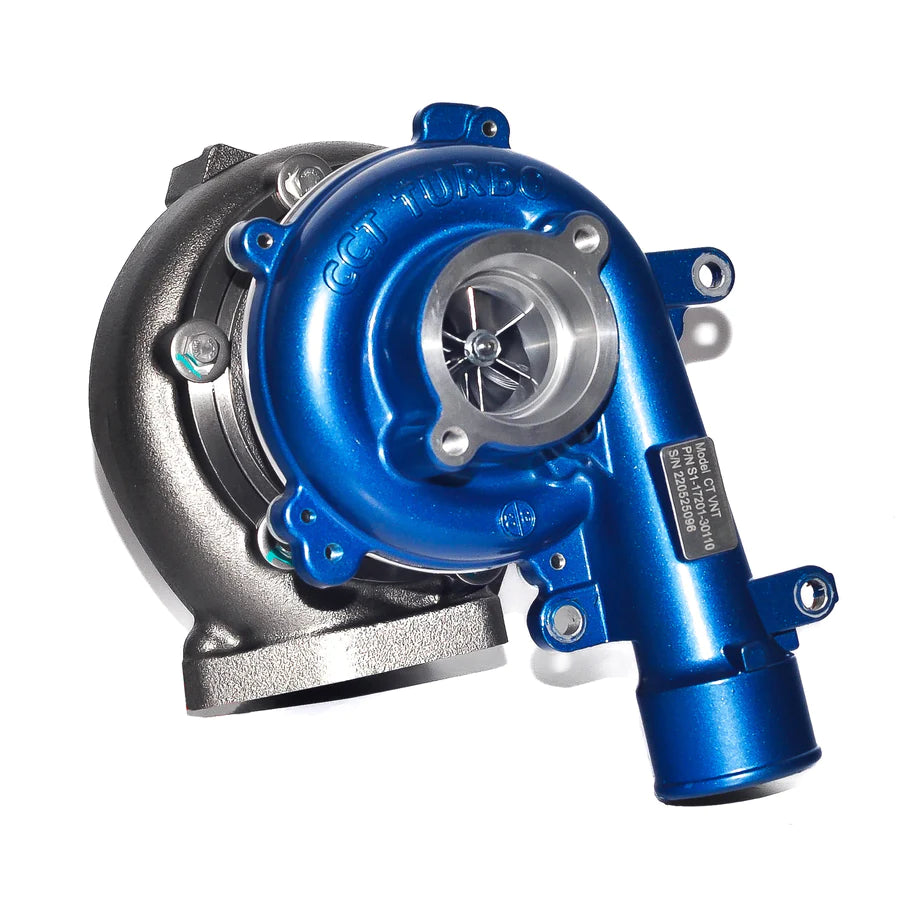Toyota Hilux Prado Hiace 1KD-FTV Common Issues And Solutions.
Cracked Map Sensor Filter.
Neglecting To Change The Map Sensor Filter When Upgrading Or Changing The Turbocharger In a 1KD Engine Can Have Consequences Beyond Just Affecting Engine Performance. Failure To Replace The Filter Can Potentially Lead To The Premature Failure Of The Turbocharger Itself. Here's Why:
- Contamination Risk:The Map Sensor Filter Acts As a Barrier Against Contaminants Entering The Sensor. If This Filter Is Not Changed Or Becomes Clogged, Debris Can Bypass It And Reach The Sensor. Contaminants Can Cause The Sensor To Provide Inaccurate Readings To The Ecu, Leading To Improper Engine Tuning And Potentially Damaging Conditions Such As Overboost.
- Inaccurate Readings:When The Map Sensor Provides Inaccurate Readings Due To Contamination, It Can Result In Improper Fuel-Air Mixture Ratios. This Can Lead To Engine Knock, Excessive Exhaust Temperatures, And Other Conditions That Can Stress The Turbocharger.
- Increased Load:Inaccurate Readings May Cause The Engine To Operate Outside Of Its Optimal Parameters, Placing Increased Load And Stress On The Turbocharger. This Can Accelerate Wear And Tear On The Turbocharger Components, Potentially Leading To Premature Failure.
- Overboost Risk:If The Ecu Receives Incorrect Pressure Readings From The Map Sensor, It May Not Properly Regulate Boost Pressure. This Can Lead To Overboost Conditions, Where The Turbocharger Produces More Boost Pressure Than The Engine Can Handle Safely. Overboost Can Cause Severe Engine Damage, Including Turbocharger Failure.
In Summary, Neglecting To Change The Map Sensor Filter When Replacing The Turbocharger On A 1KD Engine Not Only Affects Engine Performance But Also Increases The Risk Of Premature Turbocharger Failure. By Ensuring The Map Sensor Is Properly Protected With a Clean Filter, Owners Can Maintain Accurate Engine Tuning And Prolong The Life Of Their Turbocharger.
Blocked Intake Manifold.
When Changing The Turbocharger In a 1KD, Cleaning The Intake Manifold Is Essential For Several Reasons:
- Debris Accumulation: Over Time, Debris, Carbon Buildup, And Oil Residue Can Accumulate Inside The Intake Manifold. This Buildup Can Restrict Airflow And Disrupt The Air-Fuel Mixture Entering The Engine, Affecting Performance And Efficiency. When Changing The Turbocharger, Especially If It's Due To Wear Or Damage, It's An Opportune Time To Address Any Accumulated Debris In The Intake Manifold.
- Turbocharger Failure Remnants: If The Turbocharger Failed Due To Issues Such As Oil Starvation, Seal Failure, Or Worn Bearings, Remnants Of The Failure May Have Entered The Intake Manifold. These Remnants Can Include Metal Particles, Carbon Deposits, Or Oil Sludge. Leaving These Contaminants In The Intake Manifold Can Lead To Further Issues, Such As Damaging The New Turbocharger Or Causing Blockages In The Intake System.
- Optimising Performance: A Clean Intake Manifold Ensures Optimal Airflow Into The Engine. This Is Crucial For Maintaining Proper Combustion And Achieving Maximum Performance From The New Turbocharger. Cleaning The Intake Manifold As Part Of The Turbocharger Replacement Process Helps Ensure That The Engine Can Breathe Freely And Operate Efficiently.
- Preventing Future Problems: Neglecting To Clean The Intake Manifold During a Turbocharger Replacement Can Lead To Problems Down The Line. Accumulated Debris Can Continue To Build Up, Leading To Reduced Engine Performance, Increased Fuel Consumption, And Potential Damage To Engine Components. Addressing These Issues Proactively Can Help Prevent Costly Repairs In The Future.
Overall, Cleaning The Intake Manifold When Changing The Turbocharger On A 1KD Is a Proactive Measure To Ensure Optimal Engine Performance, Prevent Future Problems, And Prolong The Life Of The New Turbocharger. It Helps Remove Accumulated Debris, Remnants Of Turbocharger Failure, And Other Contaminants That Could Compromise Engine Efficiency And Reliability.
Blocked Catalytic Converter.
When Replacing a Turbocharger In a 1KD, Checking The Catalytic Converter Is Important For Several Reasons:
- Exhaust Flow And Pressure: A Failing Or Malfunctioning Turbocharger Can Cause Irregular Exhaust Flow And Pressure, Which Can Affect The Efficiency Of The Catalytic Converter. Checking The Catalytic Converter During a Turbocharger Replacement Allows You To Assess Its Condition And Ensure That It Hasn't Been Damaged Or Compromised By Issues Related To The Old Turbocharger.
- Contaminant Buildup: A Malfunctioning Turbocharger Can Sometimes Lead To Excessive Oil Consumption Or Incomplete Combustion, Resulting In The Release Of Unburned Fuel And Other Contaminants Into The Exhaust System. These Contaminants Can Accumulate In The Catalytic Converter, Potentially Causing It To Become Clogged Or Less Effective Over Time. By Checking The Catalytic Converter During a Turbocharger Replacement, You Can Determine If It Needs Cleaning Or Replacement To Maintain Proper Exhaust Emission Control
- Exhaust Temperature: Turbocharger Failure Or Malfunction Can Also Lead To Abnormal Exhaust Temperatures, Which Can Affect The Performance And Longevity Of The Catalytic Converter. Extreme Temperatures Can Cause Thermal Degradation Of The Catalytic Converter Substrate Or Melt Its Internal Components. By Inspecting The Catalytic Converter During a Turbocharger Replacement, You Can Identify Any Signs Of Overheating Or Damage And Take Appropriate Action To Address The Issue.
- Emission Compliance: The Catalytic Converter Plays a Crucial Role In Reducing Harmful Emissions From The Vehicle's Exhaust Gases. A Malfunctioning Or Damaged Catalytic Converter Can Lead To Increased Emissions, Which May Result In The Vehicle Failing Emissions Tests Or Not Meeting Environmental Regulations. Checking The Catalytic Converter During a Turbocharger Replacement Helps Ensure That It Is Functioning Correctly And Effectively Reducing Emissions As Intended.
In Summary, Checking The Catalytic Converter During a Turbocharger Replacement On a 1KD Engine Is Important To Ensure Proper Exhaust System Function, Maintain Emissions Compliance, And Prevent Potential Damage Or Issues Related To Turbocharger Malfunction. It Allows You To Assess The Condition Of The Catalytic Converter And Take Any Necessary Steps To Address Any Problems Or Concerns, Ensuring Optimal Vehicle Performance And Environmental Impact.

